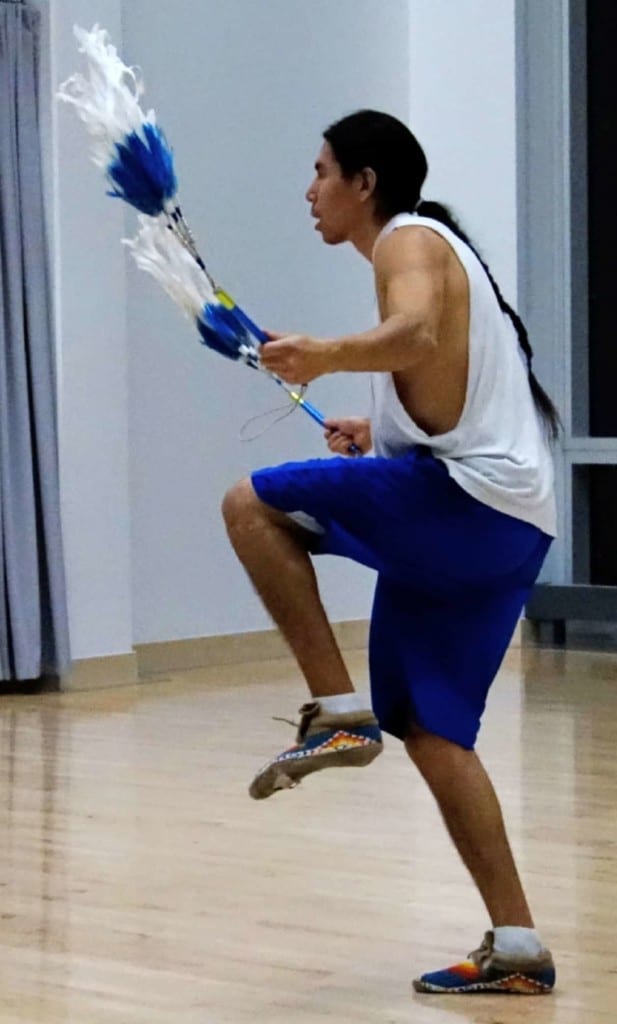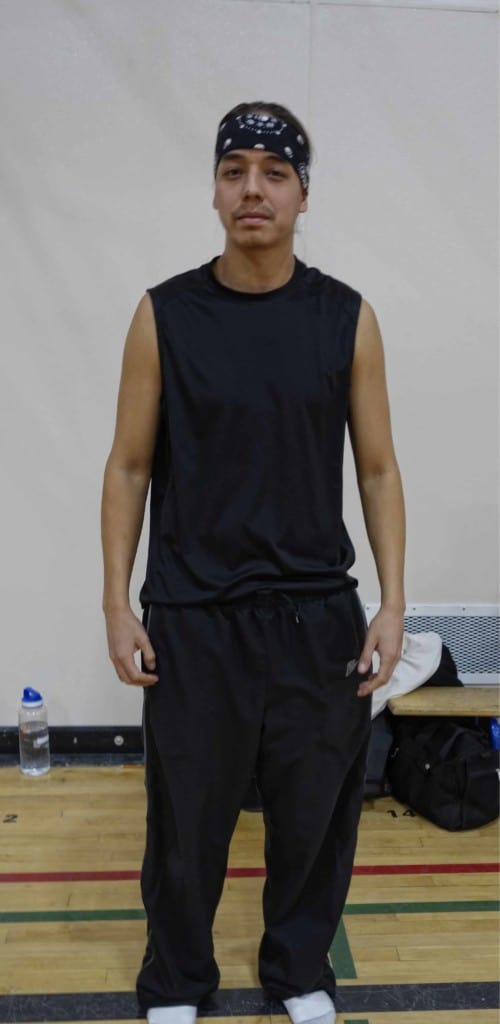Powwow dancing is a great way to stay fit
Powwow dancing requires agility, cardio fitness, stamina, and grace. Dustin Stamp, a fancy dancer from Saddle Lake Cree Nation, is committed to helping people develop and maintain these qualities in the Canadian Native Friendship Centre’s Pow Wow Practice.
“The class is for anyone and any age. We start with easy movements then add basic workout steps that get more intense with each song. I incorporate steps from the various dance styles and from my training in the gym into my program.”

Stamp decided a year ago that the powwow practices needed more structure for skill development and safety reasons.
“People from preschoolers to adults were jumping, spinning in all directions. A child could get knocked over quite easily,” said Stamp.
I observed two classes, one at the Canadian Native Friendship Centre and the other at their new location, MacEwan University’s Allard Hall.
Powwows, before colonialism, were intertribal cultural gatherings with drumming, dance, healing ceremonies, feasting, and an exchange of gifts. They were outlawed in the late 1800s through the Indian Act and although Treaty 4 and 6 elders petitioned the government and suggested adaptations, the prohibitions continued. But First Nations individuals continued powwows in secret.
A renewal began in the last half of the 20th century when Indigenous veterans returned from the Second World War. Men’s grass dance, fancy dance, women’s jingle dress dance, and fancy shawl dance were added to the traditional repertoire. Each dance has its own origin and meaning.
Competitions with cash prizes are now part of the event. At last year’s K-Days powwow, the first five male and female dancers took home between $2,000 to $800 each.
“I started dancing five years ago,” Stamp said, “because of my daughter Kylie. She wanted to learn, so I stayed and learned along with her.”
He lights sage and smudges before class. He starts the class off with a standing jog step, knee raises, butt kicks, squats and high kicks to accompanying drum beats, which is integral to the dance. He progresses to include twists, stretches, and balancing positions, while continually jumping to the rhythm of the song. As the aerobic demands intensify, the class takes timed walking breaks to catch their breath.
Stamp then leads the class in a series of dervish turns while bouncing the feet, then jumps and kicks from a squatting position. The class ends with a set of cool down stretches.
Tyson Frencheater has been coming to the class for the past year.
“It helps strengthen me and I find it therapeutic. Practice improves my tolerance for the spinning required in the fancy dance competitions,” Frencheater said.

A student at the University of Alberta, Frencheater comes from the Sunchild First Nation in the Rocky Mountain House area. His seven-year old son Treven is with him.
“The Frencheaters, who are of Cree and Ojibway heritage, are known historically to excel at fancy dance competitions. Dustin and I competed in Kamloops last summer and I won that time. My next powwow is Albuquerque in March.”
Stamp explains it’s a lot of commitment to get to the events.
“I’m a mechanic and use my holidays and take days off without pay to travel to them,” said Stamp.
The 20 plus participants at the class also benefit and learn from his dedication. The free classes are held on Thursdays from 6-8 pm.
POWWOW PRACTICE
Free & drop-in
Thursdays, 6-8 pm
MacEwan University’s Allard Hall, 11110 104 Ave
Room 11-308
POWWOW
Mondays, 6-8 pm
Westmount Junior High, 11124 130 St
Featured Image: The Powwow Practice class runs Thursdays at MacEwan University’s Allard Hall. | Aydan Dunnigan-Vickruck







